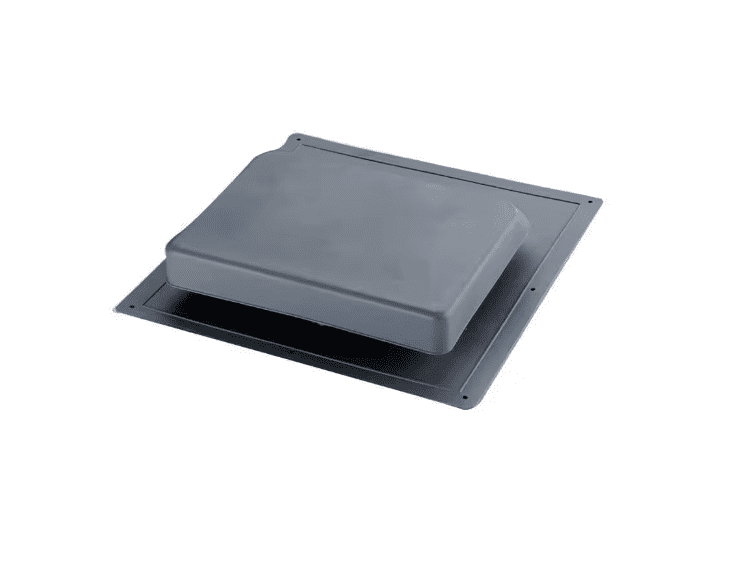When the sun is shining on the panel, the vents will do their job. Don't forget the Intake Vents! This uniform air movement helps keep your container cooler and more dry. Unlike the plastic vents of many other products on the market, this metal vent is designed to last. This is a very important step BEFORE ordering any of our Conex products. Our Solar Fans Vent out Hot Air! Mega Roofblaster Adjustable For 3 5 Ribbed Conex Shipping Containers Galvanized Solar Roof Vent Solar Roof Fan Shipping Container Exhaust Fan Get Rid Of Hot Air With The Suns Power A solar panel is attached to the top of the vent hood by four unique, stainless steel clips and is wired to a two-ball bearing, high speed fan that is rated for 50,000 hours. DOES THIS FAN INCLUDE A THERMOSTAT OR ON/OFF SWITCH? No, it is not needed. Ventilation Solution for Containers Finally Vents for Your Container We have taken our very popular Solar RoofBlaster vent/fan unit and designed a special form-fitting flashing that will sit flush on top of a Conex brand shipping container! See below for how to measure your shipping container's ribs. HOW MANY VENTS DO I NEED? We suggest one vent for every 15-20 feet. BENEFITS: Cool air will come in from intake vents and will exhaust out of the Solar RoofBlaster vent. Re-manufactured Pre-programmed FICM - NO CORE DUE - for 2003 6.0L Power Stroke | Alliant Power # AP65122 - OEM #'s When the sun is shining, it will power up the fans to help boost the effectiveness of removing the hot air building up inside your steel container. There is no need for an off/on switch. Intake Vents are crucial The key to ventilation is uniform air movement across the space you are trying to vent. Placing our 2.5 intake vents low on the shady side of your container will bring cooler air in to help push the hot air out through the vents. The image above shows a 3.5 rib size.6.5 Rib Size This image above shows a 6.5 rib size. We offer two rib sizes: 3.5 and 6.5 products. CONTENTS INCLUDE: The Solar RoofBlaster Fan (patent-pending) comes pre-installed on an 8 metal can roof vent with flashing that has been designed to fit a Conex container's ribs that measure 3.5 or 6.5 ribs when measuring the top flat portion of the roof rib. Now Choose the Product Now that you know your measurements, you can choose the correct product for your specific shipping container. This size is less common than the 3.5 rib so please do NOT skip this step! Measure! Measure! Measure! Shipping Container Accessories Solar LightBlaster For Conex Shipping Containers | Solar Blaster Solar Fans And whenever the sun isn't out, the vents will still work passively since hot air always rises. The Solar RoofBlaster is a solar-powered exhaust fan designed specifically for 3.5 ribbed Conex shipping containers. With easy installation, a noise level of... Our Solar Blaster Conex line of products bring ventilation and lighting solutions to shipping containers that are being used for storage or work spaces. Product Description Get rid of trapped heat and moisture in a Conex container. BEFORE YOU BUY - MEASURE YOUR CONTAINER'S RIB SIZE 3.5 Rib Size Measure the top-most flat section of your shipping container's raised ribs where you plan to install our ventilation product. Measuring the Rib Size BEFORE you buy Rib Size of your Container It is critical that you measure the top most flat portion of the raised ribs on your container. Ideally, the fan should run in the summer to remove excessive heat, and in the winter to remove moisture to prevent condensation. It should be about ¾ of an inch.








